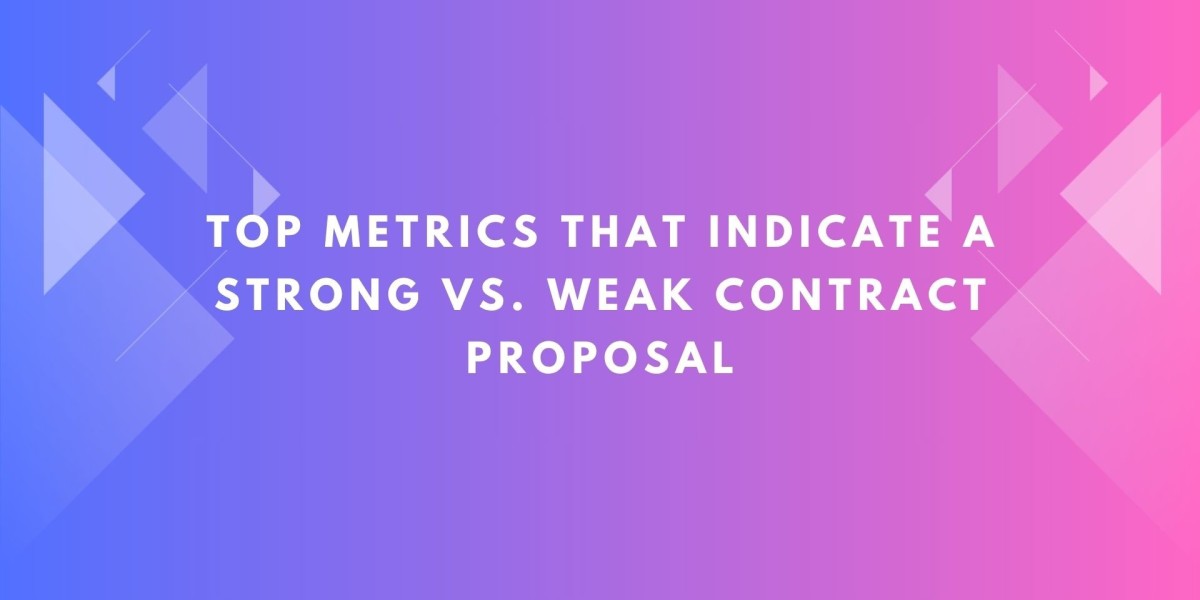A contract proposal is more than just a formality in the sales process. It is your chance to clearly define terms, demonstrate value, and secure client approval. But how can you tell if your proposal is truly effective? Beyond gut feeling, there are measurable indicators that help you evaluate whether your contract proposal is strong or weak. By tracking these metrics, you can refine your approach, improve your win rate, and build stronger client relationships.
In this blog, we will explore the top metrics that signal whether your contract proposal is hitting the mark or falling short. Understanding these signs will help you create better proposals that lead to faster approvals and more successful partnerships.
Why Metrics Matter for Contract Proposals
A contract proposal represents your business in writing. It reflects your professionalism, attention to detail, and ability to meet client needs. Relying on guesswork or assumptions about how well your proposals perform can lead to missed opportunities. When you track metrics, you gain:
Clear insight into what works and what does not.
Data to support improvements and adjustments.
A competitive advantage through continuous refinement of your proposal process.
Let’s look at the most valuable metrics you should monitor.
1. Approval Rate
This is one of the clearest indicators of proposal strength. Your approval rate measures how many of your contract proposals result in a signed agreement. A strong contract proposal typically has a high approval rate because it aligns with client expectations, provides clarity, and inspires confidence.
How to measure:
Approval rate = (Number of approved proposals / Number of proposals sent) × 100
What to watch for:
If your approval rate is consistently low, it may mean your proposals are too complex, unclear, or misaligned with client needs.
2. Time to Approval
A strong contract proposal usually leads to faster decisions. When clients can easily understand your terms and see the value, they are more likely to approve without delay. On the other hand, a weak proposal may cause clients to ask for clarifications, consult legal teams, or stall their decision.
How to measure:
Track the average time between sending a proposal and receiving approval.
What to watch for:
If your proposals often sit in review for weeks, it may be time to simplify your language, clarify your terms, or improve how you communicate value.
3. Client Engagement with the Proposal
Modern digital tools let you see how clients interact with your contract proposal. Metrics such as:
How long clients spend reading the document.
Whether they revisit certain sections.
If they download, share, or print the proposal.
High engagement often signals that clients are seriously considering your offer. Low engagement may indicate disinterest or confusion.
What to watch for:
If clients stop reading partway through, look at where they disengage. This can highlight sections that need clearer wording or stronger value propositions.
4. Number of Revisions Requested
If clients frequently ask for changes to your contract proposal, it may be a sign that your initial offer is not aligned with their expectations. While some revisions are normal, excessive back and forth can signal that the proposal is weak or unclear.
What to watch for:
Note which sections clients request changes to most often. This can help you adjust standard terms or clarify conditions in future proposals.
5. Win Rate vs. Competitors
Your proposal’s success rate compared to competitors is a critical metric. If clients regularly choose other vendors after reviewing your contract proposal, it may indicate that your pricing, terms, or value proposition need adjustment.
How to measure:
Win rate = (Number of deals won / Number of deals competed for) × 100
What to watch for:
If your win rate is low, review competitor proposals (when possible) or ask for client feedback to understand why.
6. Client Feedback
While not a numerical metric, client feedback provides valuable qualitative insight into your contract proposal. Do clients praise the clarity of your proposal, or do they express confusion? Do they mention that your terms felt fair, or did they raise concerns?
What to watch for:
Ask for feedback after the proposal stage, even if the deal is lost. Clients’ insights can guide improvements.
7. Conversion from Proposal to Revenue
Ultimately, a strong contract proposal converts into actual revenue. Track how often proposals lead to signed contracts, fulfilled projects, and completed payments.
What to watch for:
If contracts are signed but work stalls or clients back out, this could indicate issues with how expectations are set in your proposal.
How to Strengthen a Weak Contract Proposal
If your metrics suggest that your proposals are underperforming, here are steps you can take:
Simplify and Clarify
Remove legal jargon and complex clauses. Use plain language that clients can understand without a legal background.
Highlight Value First
Ensure your proposal clearly communicates how your solution solves the client’s problem. The first page of your contract proposal should focus on benefits, not just terms.
Use Visuals
Timelines, diagrams, and charts can make your proposal more engaging and easier to understand.
Automate and Track
Use digital proposal tools that allow you to track client engagement, set reminders, and collect electronic signatures. This improves efficiency and provides useful data.
Test and Refine
Try small changes in your proposals and see how they affect your metrics. For example, adjust your pricing structure, service descriptions, or layout and monitor the impact.
Conclusion
Your contract proposal is not just a formality — it is a vital part of winning business and building trust. By tracking metrics such as approval rate, time to approval, client engagement, and revision requests, you can gain a clear picture of whether your proposals are strong or weak. The insights you gather will help you create better, faster, and more persuasive proposals that lead to successful deals.
If you would like help analyzing your current contract proposal metrics or improving your proposal template, let me know. Together, we can create proposals that work harder for your business.
Read more: https://social.updum.com/read-blog/22303








